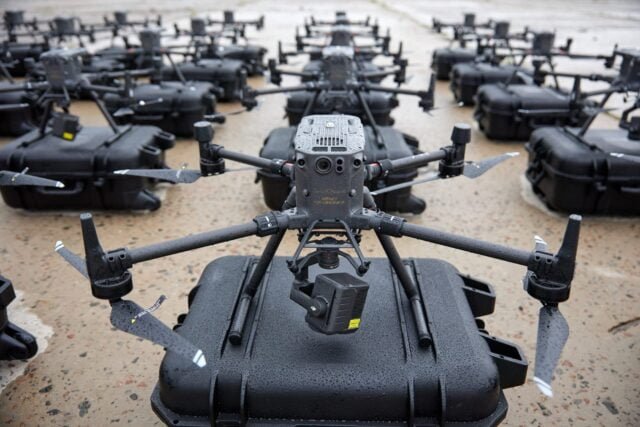
The conflict in Ukraine has evolved into a showcase for the latest in military technology, with unmanned ground vehicles (UGVs) and artificial intelligence (AI) playing pivotal roles. On both sides of the conflict, robots are being deployed for a variety of tasks, fundamentally changing the nature of warfare as we know it.
Ukraine has taken a significant step forward by introducing more than 50 ground robotic systems and over 140 UGVs for evaluation, indicating a robust push towards incorporating these technologies on the battlefield. The deployment of these UGVs, seen as a game changer akin to the impact of drones, aims to strengthen the Ukrainian army significantly. The country has become a global hub for defense technology, innovating in the face of an adversary with overwhelming resources. This technological leap is not just about matching force with force but about outmaneuvering the opponent through superior strategy and innovation. A key focus has been on employing UGVs for dangerous tasks like removing live munitions, addressing a critical need given the extensive landmine contamination across Ukraine.
Russia, not to be outdone, has responded with its own initiatives. The Moscow-based Center for Analysis of Strategies and Technologies even placed a bounty on the capture of Estonian-made THeMIS vehicles deployed by Ukraine, underscoring the high stakes involved in this technological arms race. These UGVs have been praised for their performance in demining operations and frontline cargo transport, reflecting a broader trend of employing robots for tasks too risky for human soldiers.
Beyond the realm of UGVs, AI has become a cornerstone of Ukraine’s military strategy, particularly in intelligence and reconnaissance. AI-enhanced systems are being used to analyze vast amounts of data from satellites, drones, and open sources to produce battlefield intelligence. This has included the pioneering use of AI for facial recognition on the battlefield, marking a significant evolution in the application of technology in warfare.
The war has also seen the emergence of more rudimentary robotic solutions crafted for logistics and supply, indicative of a broader trend towards the DIY development of military technology. Both Ukrainian and Russian forces have fielded simple, effective platforms for such purposes, reflecting the pragmatic innovation driven by the immediate needs of the conflict.
Ukraine’s emphasis on robotic systems extends to combat roles, with developments in unmanned ground vehicles capable of carrying weapon systems. These combat UGVs, designed for direct fire support among other missions, signal a significant shift towards automated warfare, where robots take on increasingly complex and dangerous roles on the front lines.
Recent advancements have seen the deployment of the GNOM robotic vehicles equipped with machine guns, exemplifying the ongoing evolution of UGVs as multifunctional platforms capable of engaging in combat, surveillance, and transport roles. Despite the technological promise of these systems, challenges remain in integrating them effectively into military operations, highlighting the experimental nature of this new warfare paradigm.
The introduction of the Ironclad robot, capable of delivering heavy machine gun fire remotely, stands as a testament to the rapid advancement and deployment of combat-ready robotic systems by Ukraine. With capabilities that include a significant payload and an armored hull designed to withstand small arms fire, these robots represent a new era in combat operations, blending traditional firepower with the precision and safety afforded by remote operation.
The ongoing conflict in Ukraine, therefore, serves not only as a grim reminder of the destructive potential of modern warfare but also as a crucible for the development of military technologies that are likely to shape conflicts for decades to come. The war has spurred on innovations in robotic warfare and AI, setting precedents that will influence global military strategies and the development of international norms around the use of autonomous systems in combat.
This transformation underscores a critical shift towards a future where unmanned systems and AI play central roles in conflict resolution, heralding a new era of warfare defined by technological innovation and strategic adaptation.








